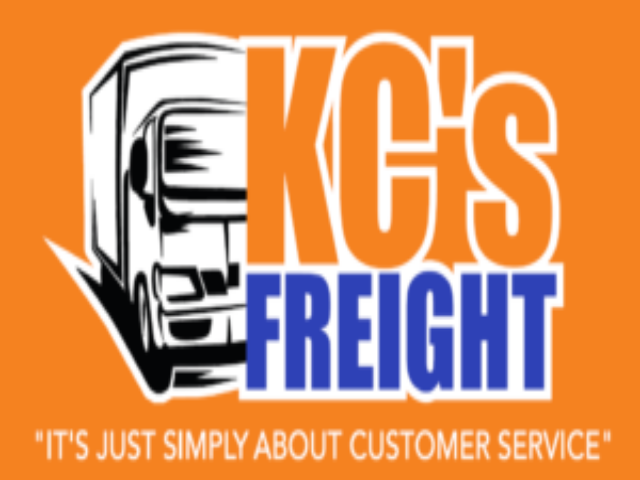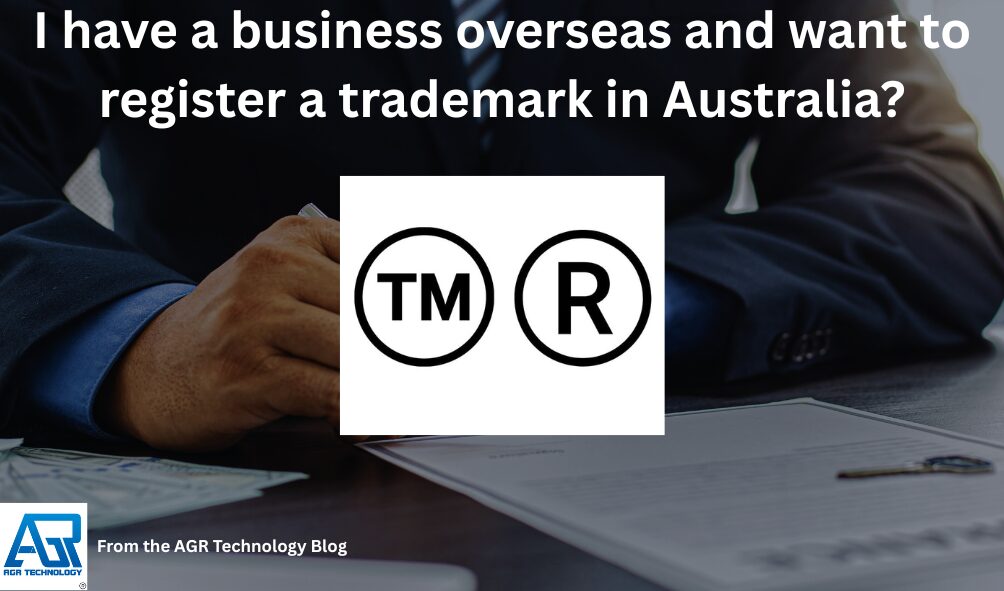Expanding your business beyond borders opens up a world of opportunity but it also brings new challenges—especially when it comes to protecting our brand. Registering trademarks from overseas in Australia isn’t just a formality—it’s a crucial step that gives you stronger enforcement powers against potential infringers in international markets.
Thanks to international agreements like the Madrid Protocol we can now register our trademarks in over 120 countries with a single streamlined application. This makes global brand protection more accessible and cost-effective than ever before. By securing our trademark rights overseas we not only safeguard our brand identity but also build trust and set the stage for successful international growth.
Need help with your business branding and trademark? Contact AGR Technology to see how we can help
Reviews from some of our happy customers:
Supporting businesses of all sizes to get ahead with digital solutions






Understanding International Trademark Registration For International Brands Wanting To Setup In Australia

Registering a trademark overseas lets you secure exclusive rights to your brand in each country where you plan to do business. International trademark registration relies on systems designed for efficient, centralized filing—most notably the Madrid Protocol, which covers 130+ jurisdictions as of 2024 (World Intellectual Property Organization).
A trademark identifies our products or services and distinguishes them from others. To get worldwide protection, we either submit applications directly in each target country or use the Madrid System, designated through WIPO. Using a single international application, we can nominate multiple countries, making global brand protection more accessible, especially for businesses entering new markets or expanding quickly.
International treaties and frameworks grant us better enforcement capabilities against infringers. With a registered mark, you’re positioned to take legal action more efficiently if someone copies or misuses our brand in another country. Exclusive trademark rights mean we control who uses the brand, licensing only to select parties or enforcing our rights in court as needed.
To meet certain criteria for international registration. You may need to own a registered or pending trademark in your home country and use the same mark for matching product or service classes ensuring the applicant is consistent with the original registration.
Costs and procedures for international trademark registration differ between countries, so conducting research on each target market helps you make informed decisions. If the Madrid System isn’t suitable for a specific country, individual filing with local representation remains an option. Early registration, when viable, offers strong brand protection, establishes trust and helps you avoid legal disputes, setting a solid foundation for successful expansion.
Key Considerations Before Registering a Trademark Overseas
Registering a trademark overseas involves unique legal and practical factors. We ensure your international application aligns with business goals and legal requirements for effective trademark protection.
Assessing Your Need for International Protection
Evaluating the necessity for overseas registration protects your brand’s identity worldwide. If you’re selling products or services, manufacturing, or planning brand expansion in new territories, securing international protection limits infringement risks and unauthorized use. Significant investments in brand awareness internationally benefit from coverage that maintains consistency and consumer trust. Some online platforms, like Amazon, require local registration before allowing market entry, making overseas protection essential for ecommerce.
Steps to Register a Trademark When Overseas
Registering a trademark from overseas allows us to protect our brand effectively in foreign markets. We gain legal certainty and can take proactive steps before expanding further.
Searching Existing Trademarks
Searching for existing trademarks identifies any identical or similar marks already registered in our target market. We use resources like the World Intellectual Property Organisation (WIPO) International Database, which contains over 36 million trademarks sourced from 40 databases. We consider at least 14 advanced search functions to ensure comprehensive coverage and prevent potential conflicts. Identifying potential infringements early reduces the risk of disputes and lost investments.
Navigating Application Procedures
Navigating the application process requires careful preparation of trademark materials. We ensure our mark is identical to the one filed or intended for use in our home country and that our goods or services match those in the original application. Filing directly in each target country means submitting local applications to each national or regional trademark office, adhering to their documentation and fee requirements. We check each country’s eligibility rules and class specifications to avoid errors that could be difficult or impossible to amend later. Many countries, including some in Asia, only recognize first-to-file applicants, so prompt action secures priority rights.
Maintaining and Renewing Your Trademark Rights
Keeping your international trademark active depends on adhering to each jurisdiction’s maintenance rules.
- Renewal is required; most countries set renewal periods at 10 years from registration or last renewal date.
- Renewal fees apply in each country where protection is sought; missed deadlines can result in cancellation or loss of rights.
- Some countries require the filing of evidence of use or a declaration of use—failure to provide this can trigger removal for non-use.
- Address changes and updates to ownership details must be reported to relevant offices or WIPO to maintain enforceability.
- Monitoring for third-party infringement or similar new filings in protected markets strengthens ongoing brand security.
Careful management of renewals and official updates sustains exclusive trademark rights, supporting continuous enforcement in global markets.
Challenges and Tips for Overseas Applicants
Navigating overseas trademark registration presents unique challenges for businesses outside the local market. Language barriers, differing legal standards, and procedural complexities often complicate the trademark process.
- Varying Legal Systems
Trademark regulations differ significantly between jurisdictions — for instance, Australia operates under a first-to-use system, while many countries apply a first-to-file approach. This means the process to establish rights hinges on local rules, not prior international use.
- Local Address for Service Requirement
Most countries, including Australia, require a local address for service of notices. Overseas applicants need a trusted agent or representative within the destination country to handle correspondence about their trademark application or any legal disputes.
- Evidence of Use and Intent
Applicants sometimes must submit proof demonstrating genuine intention to use the trademark or existing use in the target market. Without clear documentation, applications may face objections or rejection.
- Potential Conflicts with Existing Trademarks
Existing or similar marks in the destination country can trigger opposition or legal disputes. WIPO’s International Database, housing 36+ million trademarks, assists in checking for conflicts before filing.
- Document Preparation and Translation
Detailed specification of goods and services is crucial, and some jurisdictions require certified translations of application documents. Incorrect classification or translation errors can delay approval or limit protection.
- Managing Deadlines and Renewals
Every country sets its own strict application deadlines and ongoing renewal requirements — lapses may cause loss of rights. Systematic monitoring of these dates ensures continued brand protection abroad.
Tips for Smoother Applications
- Conduct comprehensive trademark searches in both home and target markets to preempt conflicts or refusals.
- Engage a qualified local agent or trademark attorney in the filing country to handle legal correspondence and procedural requirements.
- Prepare and organise documentation with clear evidence of current or intended trademark use to support claims.
- Prioritise early filing, especially in countries with a first-to-file system, to avoid opportunistic registrations by unrelated third parties.
- Stay informed about local trademark law changes that may impact ongoing applications or existing registrations.
- Monitor the relevant databases and enforcement mechanisms to act quickly if infringement occurs in the new market.
Addressing these challenges proactively secures trademark rights, minimises legal risks, and facilitates effective enforcement as businesses enter foreign markets.
Conclusion
Securing trademark rights overseas is a crucial step for any business aiming to build a lasting global presence. By taking a proactive approach and leveraging available international systems we can protect our brand identity and ensure our business stands out in new markets.
Navigating foreign regulations may seem daunting but with the right strategy and support you’re well positioned to safeguard your interests and foster trust with customers worldwide. Let’s make international trademark protection a priority as we grow your brand across borders.
Need help with your business branding and trademark? Contact AGR Technology to see how we can help
Frequently Asked Questions
Why is international trademark registration important for my business?
International trademark registration protects your brand in foreign markets, helping prevent unauthorized use and infringement. It secures exclusive rights and builds consumer trust, supporting smoother, more successful international expansion.
What is the Madrid Protocol, and how does it help with trademark registration?
The Madrid Protocol is an international system allowing you to file a single trademark application for protection in over 130 countries. It streamlines the process, reduces costs, and makes global brand protection more manageable.
How do I register my trademark in multiple countries?
You can either file separately in each target country or use the Madrid System for a centralized application. Both methods require you to have a registered or pending trademark in your home country.
What are the main steps to register a trademark overseas?
Start by searching for existing trademarks to avoid conflicts, then prepare your materials following local requirements. File your application—either directly or through the Madrid Protocol—and respond to any official actions if needed.
How long does it take to obtain an international trademark?
Madrid Protocol applications are typically processed within 12–18 months. Direct national filings may take longer, depending on the country and examination process.
What are the maintenance requirements for international trademarks?
Trademarks generally require renewal every 10 years. You must also meet local maintenance rules, monitor for infringements, and keep your trademark details updated to maintain exclusive rights.
What challenges do businesses face when registering trademarks overseas?
Common challenges include language barriers, different legal standards, local address requirements, and varying filing procedures. Engaging local experts and thorough preparation can help address these issues.
Can I register any type of trademark internationally?
Not all marks qualify. Your trademark must be distinctive and not conflict with existing rights. Some countries require evidence of use or intent to use, so research each target market’s rules in advance.
Should I register my trademark internationally before expanding abroad?
Yes, early registration helps prevent infringement and supports legal protection before you enter a new market. It’s best to prioritize countries where you plan to do business or see growth opportunities.
Related content:
Melbourne Trademark Registration Services
Global Sourcing & Procurement Services

Alessio Rigoli is the founder of AGR Technology and got his start working in the IT space originally in Education and then in the private sector helping businesses in various industries. Alessio maintains the blog and is interested in a number of different topics emerging and current such as Digital marketing, Software development, Cryptocurrency/Blockchain, Cyber security, Linux and more.
Alessio Rigoli, AGR Technology
![logo-new-23[1] logo-new-23[1]](https://agrtech.com.au/wp-content/uploads/elementor/thumbs/logo-new-231-qad2sqbr9f0wlvza81xod18hkirbk9apc0elfhpco4.png)






